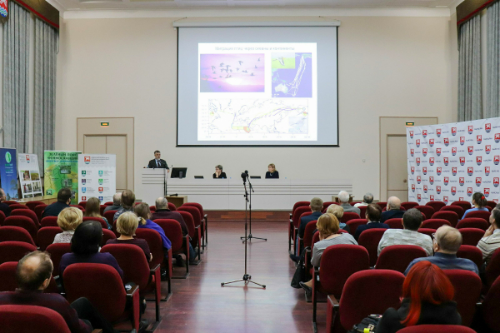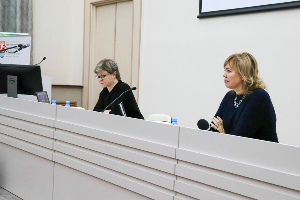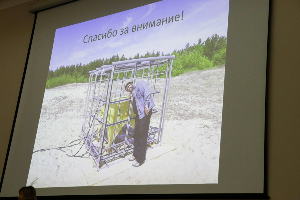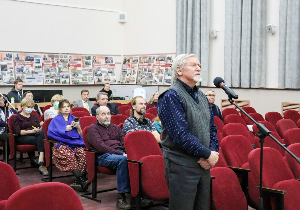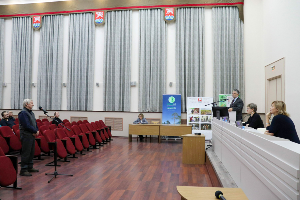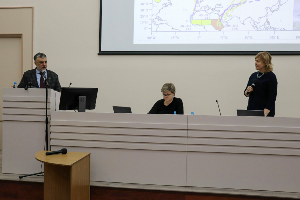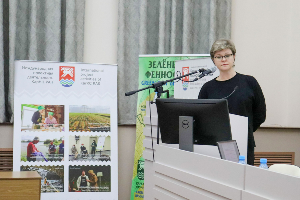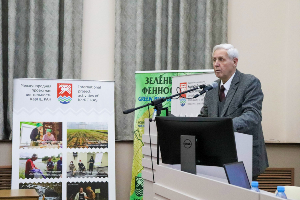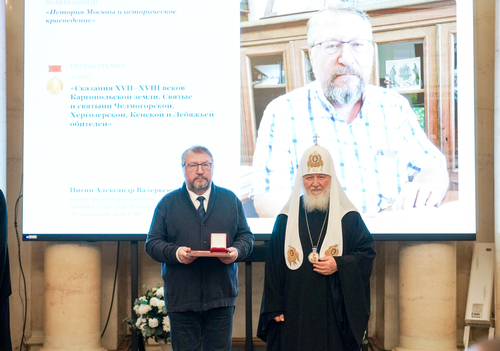Nikita Chernetsov started his presentation by showing satellite tracks of Bar-tailed Godwits, birds of the sandpiper family. They fly from Alaska, where they nest, to New Zealand for wintering without a single landing. These birds cover 11-12 thousand kilometers over the Pacific Ocean, which is about eight days of continuous flight. In doing so, they have to accurately keep their direction. How the birds manage to do this is a question that scientists around the world are trying to figure out.

Nikita Chernetsov, RAS Corresponding Academician, Doctor of Biology
As opposed to many migratory animals, such as whales, dolphins or giant sharks, birds can be studied under controlled conditions. In particular, scientists can do this by using a special device, a "circular arena," inside which birds leave marks on the walls as they move.
– There is a special feature: birds with a diurnal lifestyle perform migratory movements. This has been known since long ago. If they are placed in a cage, they will flit around and exhibit what is called nocturnal migratory restlessness. They want to fly away, but they can't. In these experiments, their activity trends in the direction where they would fly if they were free, for example, northwestward," the scientist said.
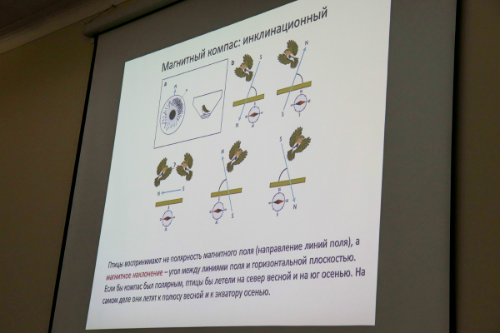
A slide from the scientist’s presentation
Based on the results of many years of research, including that led by Nikita Chernetsov, scientists can now assert: birds and other animals actually find their way to the goal using a kind of "compass" and "map.
– The compass and the map are not necessarily based on the same physical principle. The compass system of birds is redundant. They have a solar compass, a star compass, and a magnetic compass. The positioning system in birds is most likely a magnetic map, which is used over large distances, and possibly a scent map, which is used for distances of tens of kilometers," Nikita Chernetsov summarized.
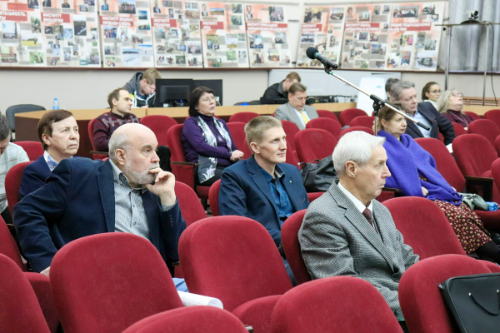
Audience of the council meeting
The presentation of the invited expert was followed by questions and comments from the audience - specialists in various fields of knowledge: ornithology, ichthyology, geophysics, mathematics, and others.
– I’ve been studying salmonid fishes all my life. Parallels can be drawn to homing in salmonids. Many things remain unknown there as well, but at the same time there are quite many studies confirming the role of alterations in the biochemical metabolism at certain reference points. It works at a higher level - physiological, behavioral - said RAS Academician Nina Nemova. - In general, what we heard about today is a general biology topic, which is of interest to everyone. Talking between ourselves, we tried to think about how these processes could be applied or adjusted to what we do. Thank you very much for taking the time to come here. Things from this lecture will be transformed into my research as well.
Konstantin Tirronen, Head of the Zoology Laboratory at the Institute of Biology KarRC RAS, also shared his thoughts regarding the presentation.
– This made me contemplate philosophically on how much man has lost in the process of evolution. Animals orient themselves in space with such ease. And, as we were told today, orientation systems can be not only innate, but also acquired. The workings in humans are much more complicated. Mammals, by the way, demonstrate the same systems. This has been shown, e.g., in the process of reintroduction of some species, for example, when trying to restore our fauna's endemic, the reindeer. When adults were relocated so they would establish a new population in another place, the animals refused and returned to their homes. They were transported in fully enclosed containers, but they still returned to the starting point. Only when the animals were made artificially to breed in the new location did the offspring appear that considered the new place their home.
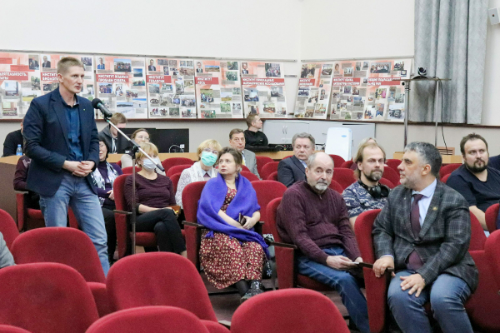
Head of Zoology Laboratory, Institute of Biology KarRC RAS, Konstantin Tirronen
Wrapping up, Olga Bakhmet, KarRC RAS Director General, RAS Corresponding Academician, thanked Nikita Chernetsov for the lecture and for finding the opportunity to come to Petrozavodsk in spite of the busy reporting time. "We hope to continue the discussion both on our grounds and in the framework of scientific conferences and seminars", - Director added.
Another scientific speaker at this Learned Council session was Chief Researcher at IAMR KarRC RAS Evsey Morozov. KarRC RAS Secretary for Science Natalya Fokina outlined the plan for the Learned Council activities in 2023. Editor-in-Chief of the journal "Transactions of the Karelian Research Centre RAS" Alexander Titov told about the planning for next year's issues. It is expected that eight issues of the regular series and one thematic issue will be published.




